#data_structure
Explore tagged Tumblr posts
Link
Working with dictionaries in Python is essential because it allows for efficient data storage and retrieval. They are mutable, meaning the values can be changed and unordered, meaning they do not rely on the order of the elements in the dictionary. Dictionaries are versatile and can store complex data, such as nested dictionaries. Additionally, dictionaries are integral to Python programming and are often used for manipulating and organizing data. Read this article to understand how to create and manipulate dictionaries in Python.
0 notes
Link
A Binary tree is a non-linear data structure in which a node can have either 0, 1, or maximum 2 nodes. A Binary search tree is a tree that follows some order to arrange the elements, whereas the binary tree does not follow any order.
0 notes
Photo
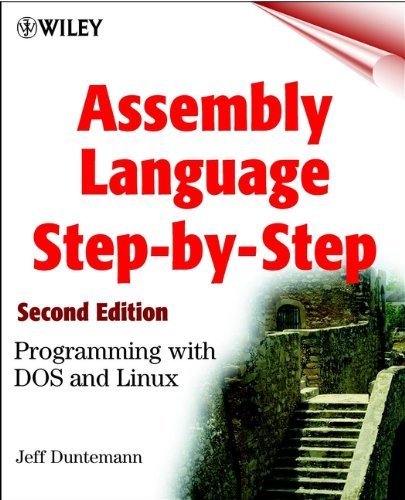
ASSEMBLY LANGUAGE STEP-BY-STEP: PROGRAMMING WITH DOS AND LINUX (WILEY COMPUTER PUBLISHING)
The bestselling guide to assembly language-now updated and expanded to include coverage of Linux This new edition of the bestselling guide to assembly programming now covers DOS and Linux! The Second Edition begins with a highly accessible overview of the internal operations of the Intel-based PC and systematically covers all the steps involved in writing, testing, and debugging assembly programs. Expert author Jeff Duntemann then presents working example programs for both the DOS and Linux operating systems using the popular free assembler NASM. He also includes valuable information on how to use procedures and macros, plus rare explanations of assembly-level coding for Linux, all of which combine to offer a comprehensive look at the complexities of assembly programming for Intel processors. Providing you with the foundation to create executable assembly language programs, this book: * Explains how to use NASM-IDE, a simple program editor and assembly-oriented development environment * Details the most used elements of the 86-family instruction set * Teaches about DEBUG, the single most useful tool you have as an assembly language programmer * Examines the operations that machine instructions force the CPU to perform * Discusses the process of memory addressing * Covers coding for Linux.
https://video-course.com/2019/05/08/assembly-language-step-by-step-programming-with-dos-and-linux-wiley-computer-publishing/
0 notes
Photo
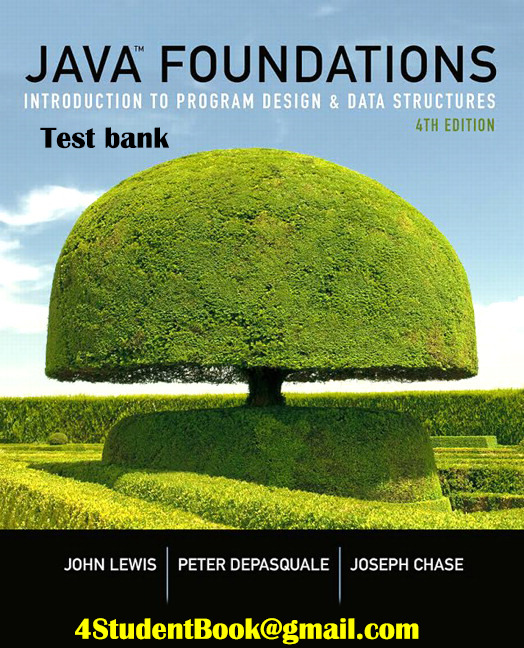
Test bank for Java Foundations: Introduction to Program Design and Data Structures 4th Edition Product details: by John Lewis Publisher: Pearson; 4 edition (February 20, 2016) ISBN-10: 0134285433 ISBN-13: 978-0134285436 Product no: 1741 Price = $26.55 For Contact: [email protected] website: www.4studentbook.com
0 notes
Photo

I find “Introduction to Algorithms” by Thomas Cormen to be a lot better. Started writing the functions in Go.
https://github.com/Radu1990/ITA-Cormen
0 notes
Photo
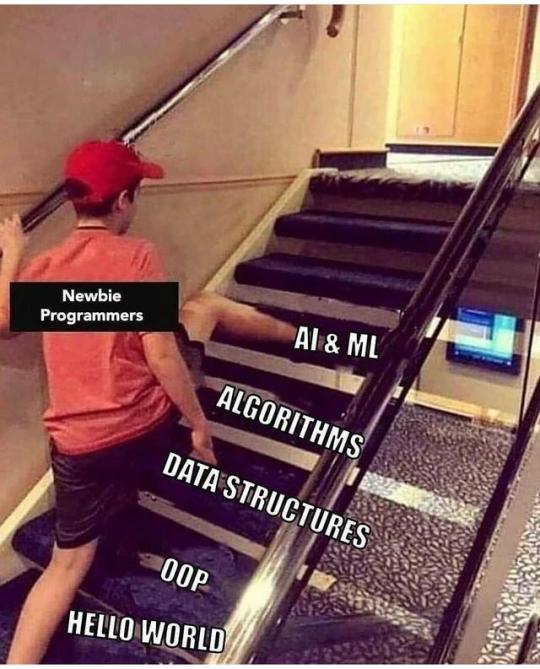
Skipping Some Steps
The joke is "newbie" or beginner programmers tend to overestimate their abilities. The steps in the picture represent the usual order in which programmers learn things, with the newbie programmer trying to skip all the basics to jump into something advanced. Let's break down the steps:
A "hello world" program is just about the simplest thing you can code that actually does something: it has the computer spit out the words "hello world" onto the screen. (You can use any words you want but "hello world" is traditional.) If you see those words, you know your code is working. If you don't, it isn't. The fact that it usually only take a couple lines of code makes "hello world" a great piece of starter code for new programmers, as well as experienced programmers learning a new piece of technology or starting a new project.
OOP is Object-Oriented Programming. Many programming languages let you bundle data and code into objects to help you keep related things organized. For example, a "User" object might contain data like a username, password, and e-mail address, and code that lets you log in and change your password. The learning curve for OOP goes from pretty flat to really steep. It's kind of like using electricity: you can't get far in life without knowing how to change the batteries in a flashlight or knowing that you shouldn't stick a fork in a wall socket, but everything beyond that, like knowing how to connect wires and measure voltage, can feel pretty advanced.
Understanding data structures is understanding the different ways programming languages tell the computer to handle and organize data. For example, it makes sense that when you sign up for a Facebook account, Facebook writes your name in a computer somewhere. But how does Facebook handle lists of names, like your account's "friends"? How does it know which names are your friends and which names are other people's friends?
An algorithm is a list of instructions to take in some data and spit out some other data. For example, subtracting someone's age from the current year to get the year they were born is an algorithm: regardless of how old someone is, if you follow those steps you'll always get the year they were born. When you hear "algorithm" you probably think of some fancy equation to forecast the weather or help Google search the web, but they can also be simple.
Different programmers might learn OOP, data, and algorithms in different orders. Each of them goes from being pretty straightforward to super complicated. You don't need to know everything about one before going to another. But you definitely need to know a good chunk about all of them before going to the last one:
'AI' and 'ML' refer to artificial intelligence and machine learning. They're different but have a lot of overlap. They also have kind-of "fuzzy" definitions. I'd say AI is the ability of a machine to make a decision without having instructions telling it exactly how to make the decision. ML is the ability of a machine to recognize patterns in data without having instructions telling it exactly how to recognize the patterns. Machine learning can be used to increase a computer's artificial intelligence.
A good number of people start learning code because they have an idea for a video game, an AI application, or something else shiny and trendy. It's tempting to skip the basics and go straight into the "interesting" stuff, but it very quickly becomes obvious that won't work.
19 notes
·
View notes
Photo
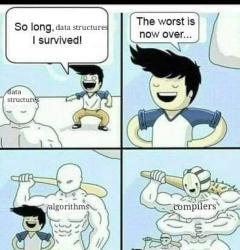
data structures by jkbscopes312 https://www.reddit.com/r/ProgrammerHumor/comments/cp7ins/data_structures/?utm_source=ifttt
1 note
·
View note
Link
0 notes
Text
Python Lists of Tuples - #Ankaa
Python Lists of Tuples In this post we will talk about creating Python Lists of Tuples and how they can be used. Python Lists Lists in Python are simply an array. Here is a basic list of my favorite WoW Classes: Source de l’article sur DZONE https://ankaa-pmo.com/python-lists-of-tuples/ #Code #Data_Structures #Lists #Open_Source #Python #Tuples
#code#data structures#lists#Open Source#python#tuples#Actualités#Méthodes et organisation des process IT
0 notes
Text
Algorithms-Sort
1.排序基本概念
2.插入排序
3.交换排序
4.选择排序
5.归并排序
6.分配排序
7.排序方法比较
来源:
http://student.zjzk.cn/course_ware/data_structure/web/paixu/paixu8.1.1.1.htm
0 notes
Photo

#Thank #You for #Supporting #Game of #Data_Structure because 104+ #People #Played this Game on #Indian_CyberApps #Thank #You for #Supporting #Game of #Data_Structure because 104+ #People #Played this Game in 1 #Month on #Indian_CyberApps
0 notes
Photo
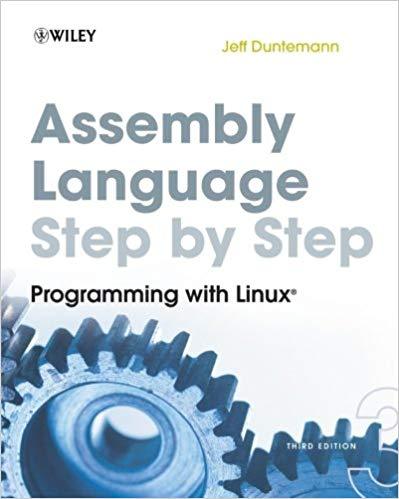
ASSEMBLY LANGUAGE STEP-BY-STEP: PROGRAMMING WITH LINUX, 3RD EDITION
The eagerly anticipated new edition of the bestselling introduction to x86 assembly language The long-awaited third edition of this bestselling introduction to assembly language has been completely rewritten to focus on 32-bit protected-mode Linux and the free NASM assembler. Assembly is the fundamental language bridging human ideas and the pure silicon hearts of computers, and popular author Jeff Dunteman retains his distinctive lighthearted style as he presents a step-by-step approach to this difficult technical discipline.
He starts at the very beginning, explaining the basic ideas of programmable computing, the binary and hexadecimal number systems, the Intel x86 computer architecture, and the process of software development under Linux. From that foundation he systematically treats the x86 instruction set, memory addressing, procedures, macros, and interface to the C-language code libraries upon which Linux itself is built.
Serves as an ideal introduction to x86 computing concepts, as demonstrated by the only language directly understood by the CPU itself Uses an approachable, conversational style that assumes no prior experience in programming of any kind Presents x86 architecture and assembly concepts through a cumulative tutorial approach that is ideal for self-paced instruction Focuses entirely on free, open-source software, including Ubuntu Linux, the NASM assembler, the Kate editor, and the Gdb/Insight debugger Includes an x86 instruction set reference for the most common machine instructions, specifically tailored for use by programming beginners Woven into the presentation are plenty of assembly code examples, plus practical tips on software design, coding, testing, and debugging, all using free, open-source software that may be downloaded without charge from the Internet.
https://video-course.com/2019/05/08/assembly-language-step-by-step-programming-with-linux-3rd-edition/
0 notes
Link
Immutability is essential in programming. It enables developers to create more reliable and predictable systems. Immutable data structures cannot be modified, which ensures that the data remains consistent and does not get corrupted or altered by unintended operations. This makes them safer for various applications, from web development to financial systems. Immutability also allows for better code readability and maintainability, eliminating the need to track and update data manually. Like other programming languages, Immutability is important in .NET C#, and this article will show you how to apply it in this programming language.
0 notes
Link
Many Linked list variations are based on the basic linked list structure but have been modified to better suit a particular application. Examples of linked list variations include doubly linked lists, circular linked lists, skip lists, and XOR-linked lists. This article will describe the doubly linked list as a variation of the singly linked list and its implementation in C++.
0 notes